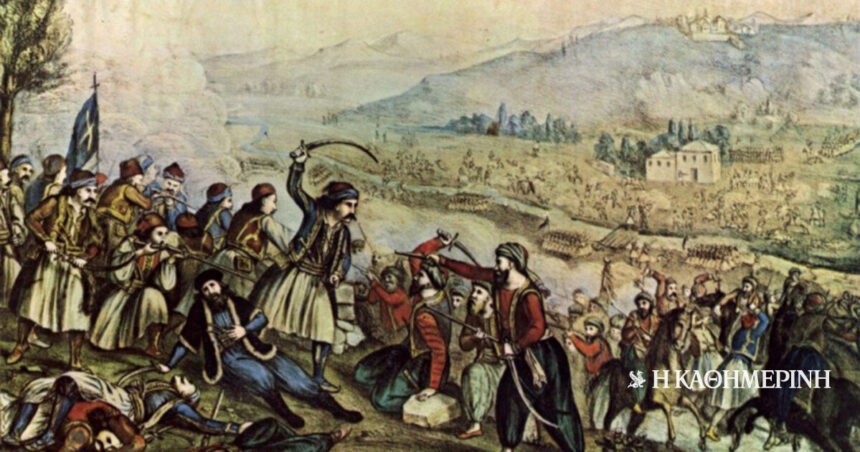Within a few weeks after its preaching, the Revolution It spread throughout the Peloponnese, Central Greece and the Aegean islands. Undoubtedly a decisive role in disseminating the message of the revolution has been played by the liberation of Kalamata on March 23, 1821. Head of the Greek forces who entered Kalamata Petrobei Mavromichalison the side of which were the son of Elias, his brother Kyriakoulis, Theodore Kolokotronis, Anagnostaras and Papaflesas.
After the occupation of Kalamata, Kolokotronis and his men headed north to Gortyniahis main field of action during his youth, when he lived either as a thief in the mountains of the Peloponnese or as a boss in the service of the area’s precursors. There he met with members of the Deligiannian family, with whom he had clashed in the past, before his establishment in Zakynthos.
The “old man of Moria” believed that the Greeks had to avoid direct conflict with the Ottoman troops.
On April 28, Kolokotronis took over the commander -in -chief of the Karytaina forces. Soon the “old man of Moria” implemented his war plan, which was mainly aimed at gathering the Ottomans, soldiers and civilians, the big cities and castles of the Peloponnese. At his point of view, Greeks had to avoid direct conflict with the Ottoman regular troopssince they did not have the necessary war experience in such a war match. On the contrary, he qualified as an ideal tactic of the guerrillawhich proved in practice successful.
The first major test for Greek forces took place on May 12-13 at Valteciwhen the Ottoman forces attempted to surprise the Greek siege of Tripolitsa, attacking their camp. Despite the initial difficult position in which Greek fighters were found, managed to repel the Ottoman soldierswho in their retreat abandoned their valuable weapons. The outcome of the battle showed the Ottoman officials, who had been closed behind the walls of Tripolitsa that the revolution was not yet a thieves uprising, but the collective effort of a nation.
The head of the Ottoman forces of Tripolitsa attempted to carry out another attack on the Greek forces around the city.
A few days later, the head of the Ottoman forces of Tripolitsa, Kehayabeihe attempted to carry out another attack on the Greek forces around the city. This time in his target found the camp in Vervena. He calculated that due to the fact that the camp was relatively cut off from the rest, located in the southeast of the city, it would not be properly manned.
On the night of 17th to May 18, 1821, the men of Kehayabei left Tripolitsa and divided into three sections. The first section headed to Vervena from the north, the second to Doliana, to invade the Greek camp from the east and the third to Dragouni, which is located near Doliana. Kehagiabey’s men besieged Bervena and Doliana and then broke out intense battle. As soon as he was informed of the event of the attack by Kechayabei, Nikitas Stamatelopoulos (Nikitaras), who was walking for Argos for supplies, went to Doliana with his men, reinforcing the defense of the Greeks in the village.
Despite their numerical superiority, the Ottoman soldiers were unable to break up the defense of the Greeks in the area.
Despite their numerical superiority, the Ottoman soldiers were unable to break up the defense of the Greeks in the area. About two and a half thousand men, who were under the orders of Antonis Mavromichalis, Panagiotis Giarakou, Anagni Kontakis, Panagiotis Zafiropoulos, Nikitaras and the local chieftains Mitromaras Athanasiou and Elias Konstantopoulos, They were strong resistance covered by enemy fires inside the houses in the two villages.
When the reinforcements arrived from the rest of the Greek camps, the scales leaned towards them. The battle ended with the repulsion of Ottoman soldiers back to Tripolitsa. It was a huge victory for the rebellious Greeks, who in a week managed to prevent the Ottomans from leaving Tripolitsa, tightening the cluster around the city.
Column: Myrto Katsigera, Vassilis Minakakis, Antigoni-Despina Poumenidou, Athanasios Syroplakis




